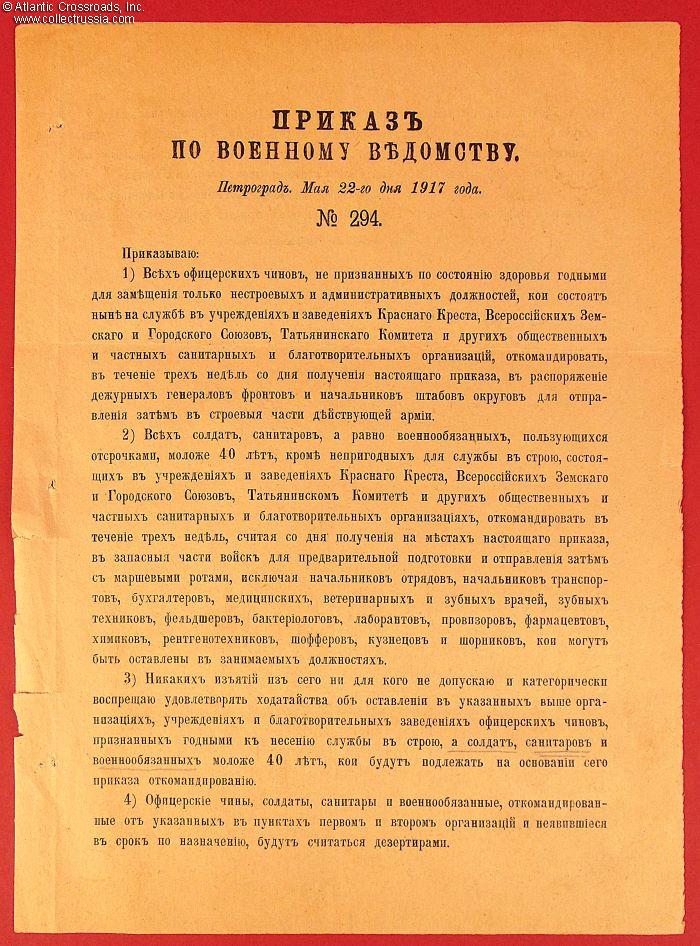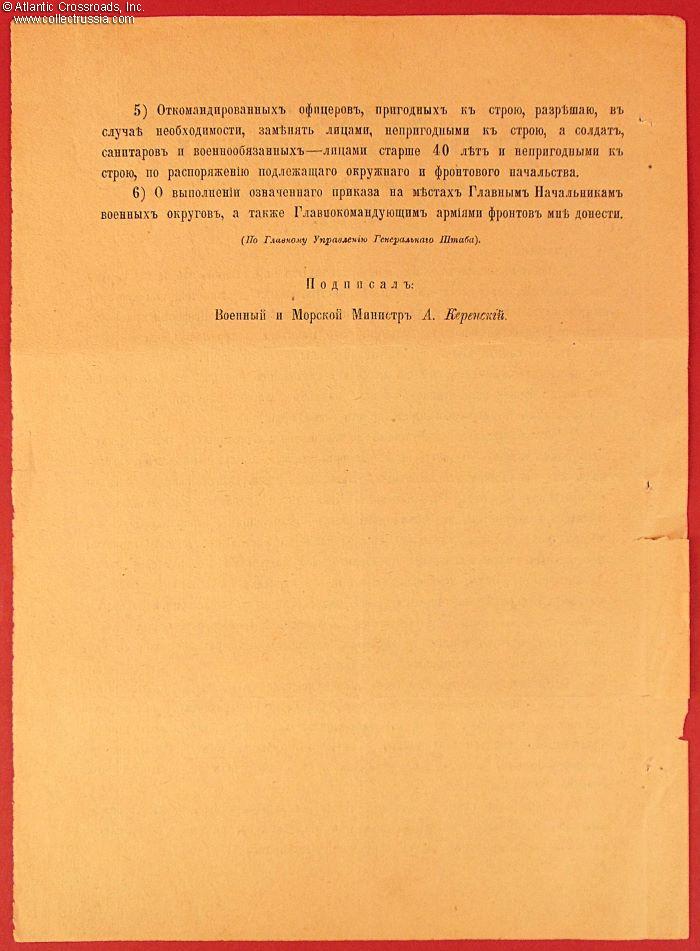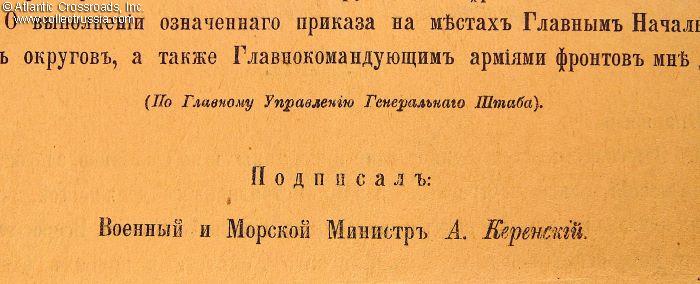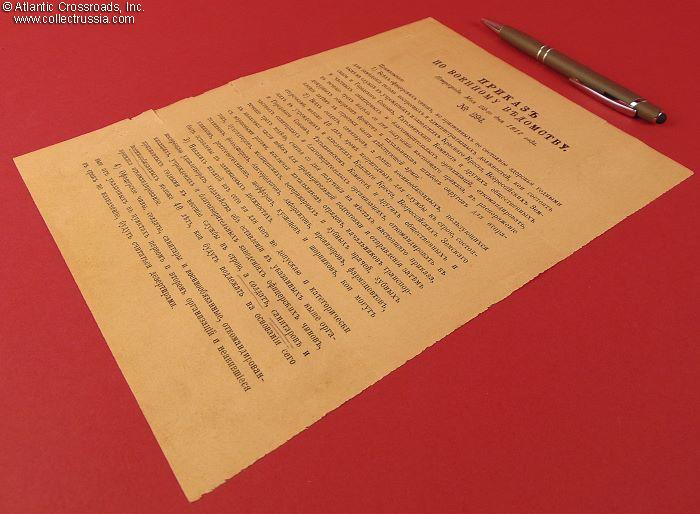Leaflet with Provisional Government's Decree #294 of 22 May 1917, a last-ditch mobilization order signed by Alexander Kerensky, then Minister of the Army and Navy, future leader of a very short-lived coalition government.
Single page 8" x 10 ½", front and back. The decree was signed by Alexander Kerensky as the newly-minted Minister of the Army and Navy of the Provisional Government. In essence, it was a last-ditch attempt to bolster the Russian Army by men who, up to that point, were deemed unfit for active duty or were exempt from military service based on their professional occupation. No exceptions for anyone younger than 40 years of age. Those who failed to appear at their assigned mobilization locations would be considered as deserters.
In very good to excellent condition. The paper is attractively and evenly age-toned. The left margin has a short tear and a separation at the old fold, both easily repairable with acid-free tape, if desired. The document was removed from a file with great care, leaving three tiny holes in the left margin. All the wear is confined to the margin and does not reach the text.
Alexander Kerensky (Александр Федорович Керенский, 1881 - 1970) was a Russian lawyer and revolutionary, the last Chairman of the Russian Provisional Government, leading the short-lived Russian republic from July to early November 1917. In May 1917, he was appointed Minister of the Army and Navy, his ambition being to enter History as the Savior of Russia and Europe. Kerensky joined the revolutionary movement in 1904 and worked as a legal counsel to victims of the Revolution of 1905, gaining a reputation as a defense lawyer in trials of revolutionaries. As the February 1917 Revolution broke out, Kerensky was one of its most prominent leaders. While visiting one frontline division after another and agitating men to do their duty, Kerensky's liberal policies stripped officers of their mandate and handed over control to "soldier committees," making this drastic change to the army that was already unwilling to fight. When the Bolshevist October Revolution broke out, Kerensky fled to Pskov where he rallied some loyal troops and made an attempt to re-take Petrograd. The attempt failed, Kerensky spent a few weeks in hiding until he finally escaped and eventually arrived in France. He remained a strong opponent of democracy in Russia and did not support either the Bolsheviks or the White Movement. When Germany invaded Fraince in 1940, Kerensky emigrated to the United States. During the Nazi invasion of the Soviet Union, he expressed his support of the Russian people's defense against Hitler despite his opposition to the Soviet regime. He criticized both Lenin and Stalin but held the survival of Russia as a nation above their political differences.
Kerensky settled in New York City where he died of heart disease in St. Luke's Hospital on 11 June 1970. The Russian Orthodox church refused to grant Kerensky burial rites because of his association with Freemasonry and because the church saw him as largely responsible for the Bolsheviks' seizure of power. Kerensky's body had to be flown to London where his two sons lived. He was buried at the non-denominational Putney Valley Cemetery.
Please note that the pen in our photo is for size reference.
Item# 45804
$80.00 Add to cart




